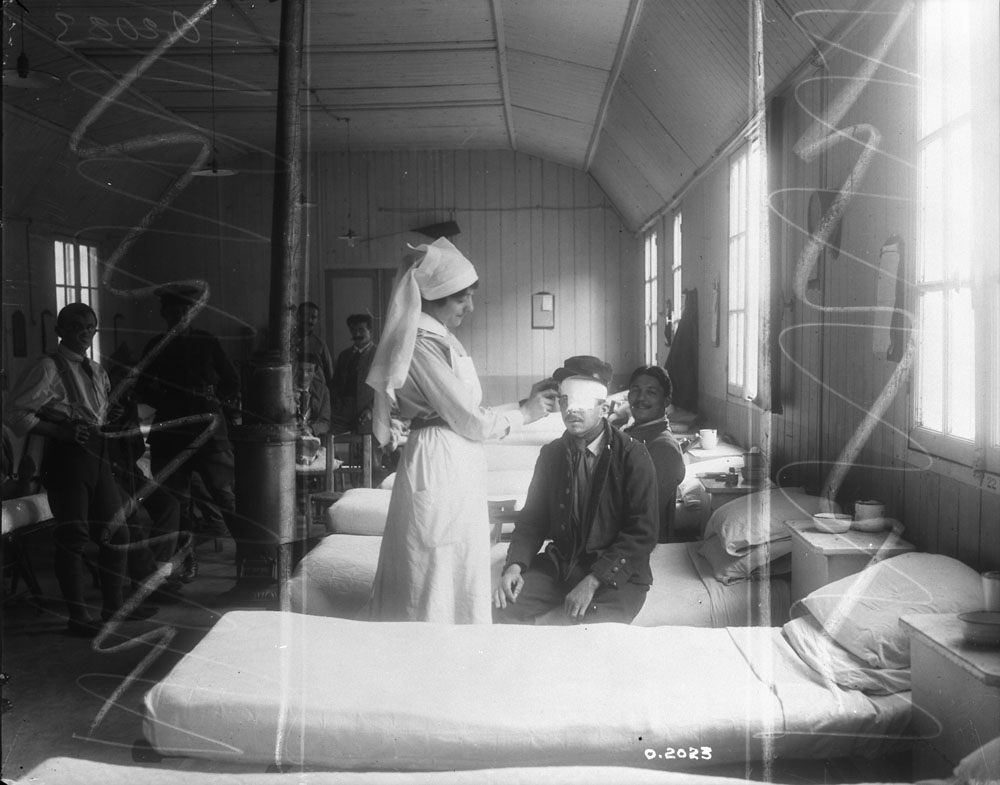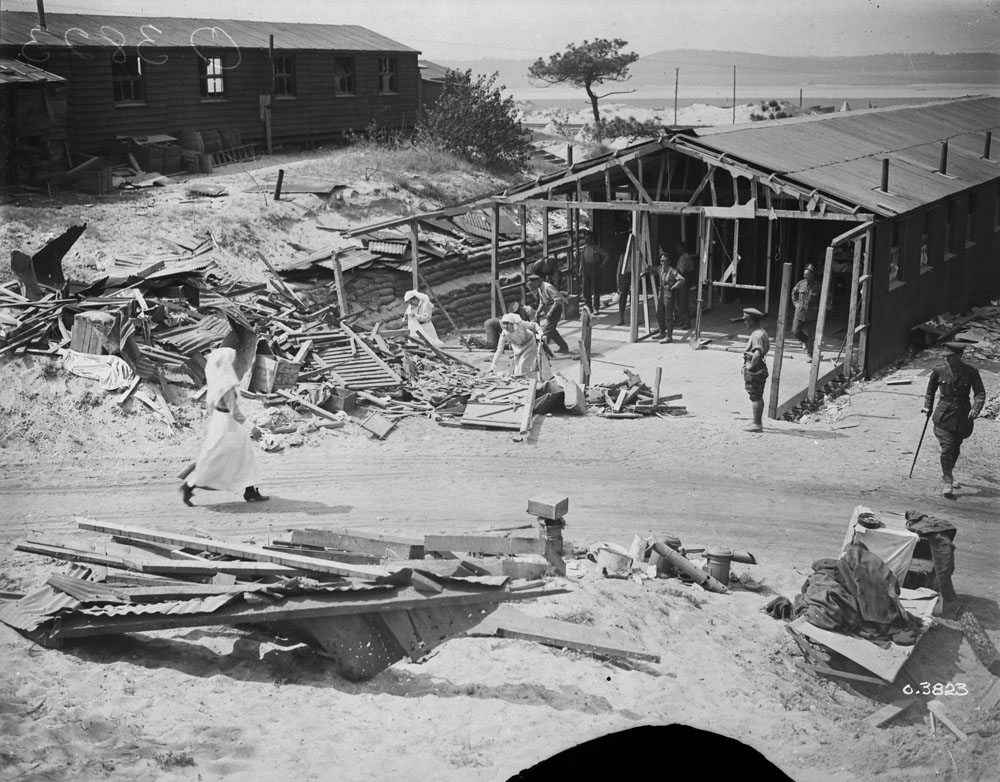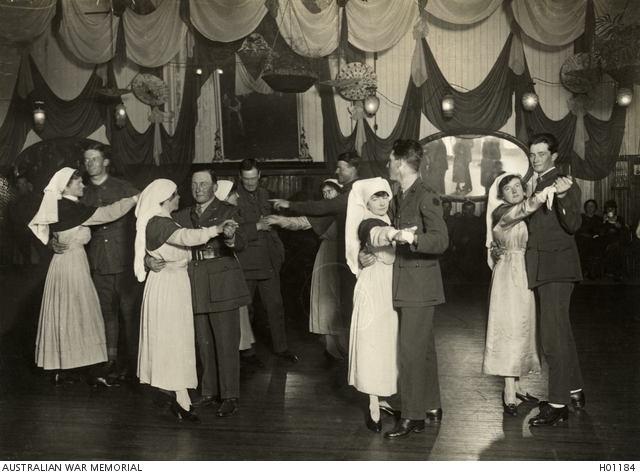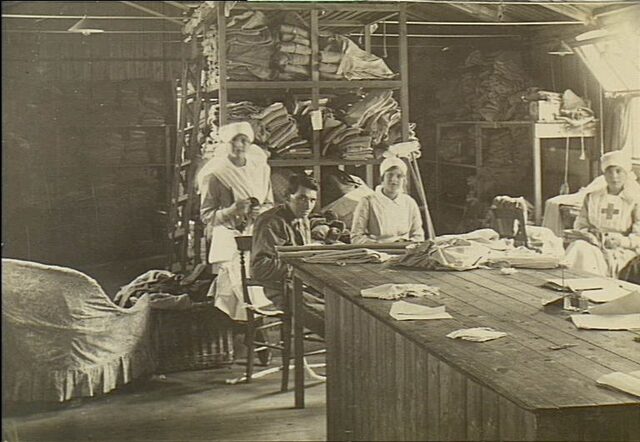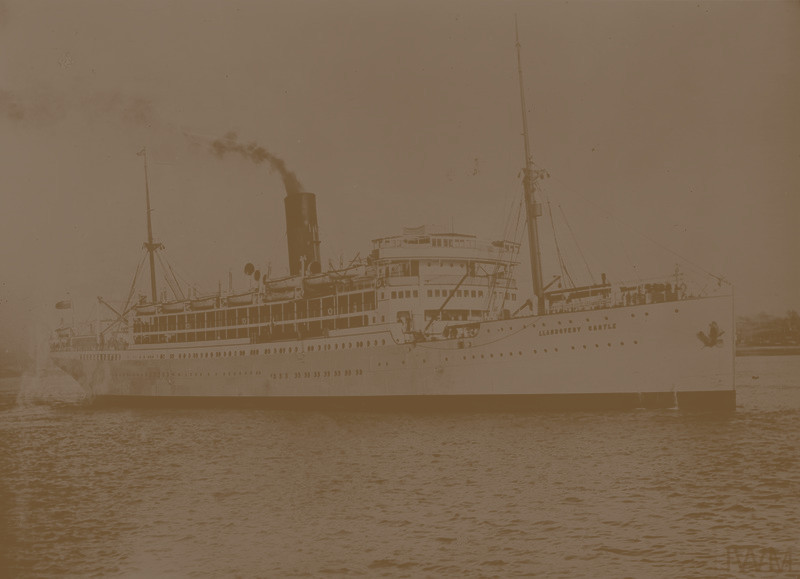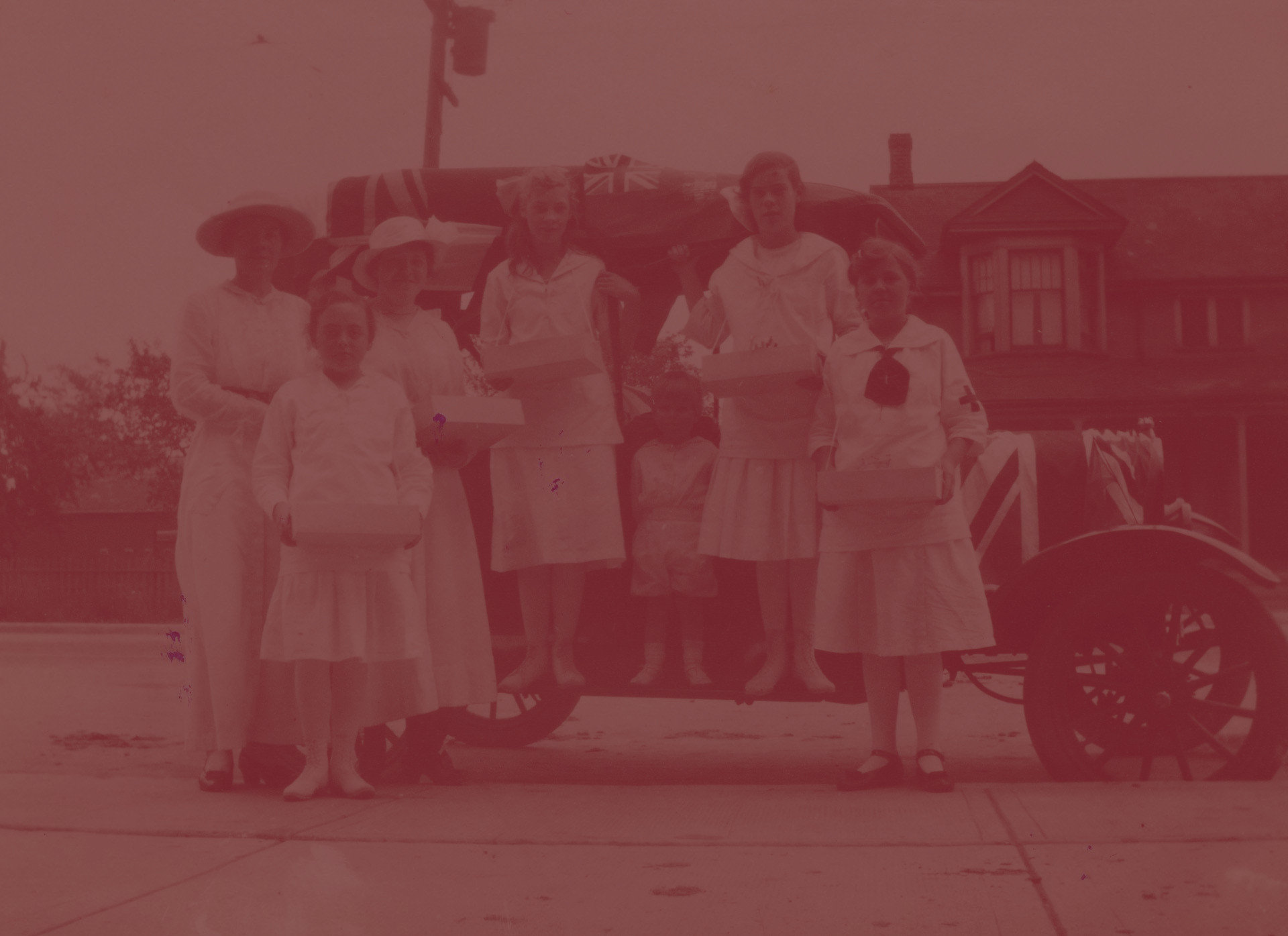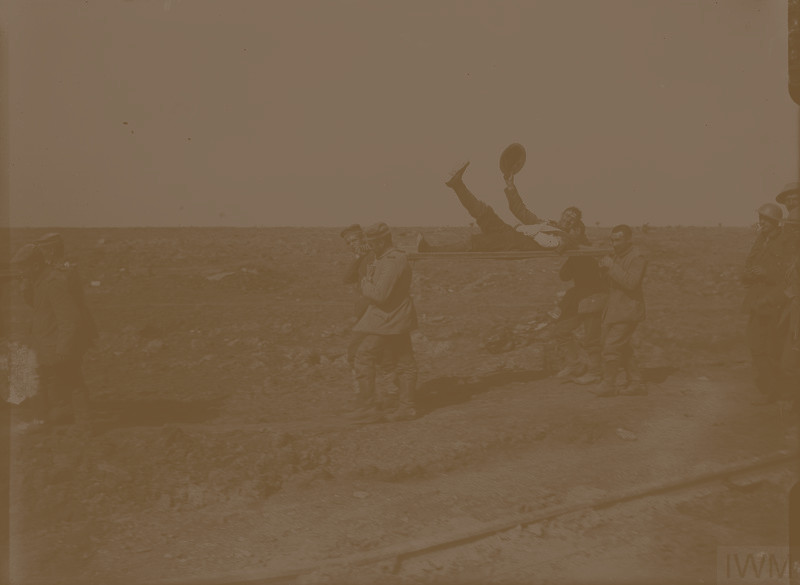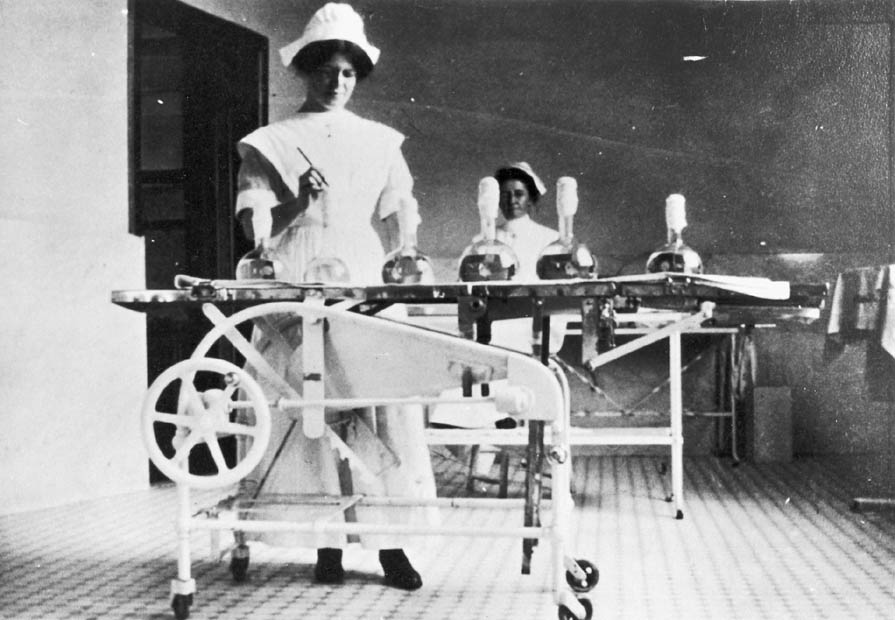
The Realities of Nursing
Image courtesy of Canadian Nurses Association/Library and Archives Canada
During the 19th century, women were not seen as equal to men and they were limited to performing very specific roles. Young girls were taught how to become good mothers, care takers and housewives. With the onset of the First World War the role of women began to change. Women became factory workers, munitions experts and nurses. Many saw the right to vote as the main barrier to equal rights for women. Although the suffragette movement predates the war, the movement gained the most support during the conflict.
The nursing profession had just begun to take shape when the Great War broke out. Since this occupation was so new, people were not quite sure what to expect of a nurse. Everyone formed their opinion on what their duties were and how they were supposed to behave. As a consequence, several identity tropes started to emerge of what a “typical” nurse was like.
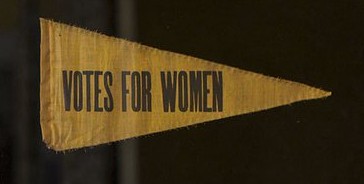
The Canadian Nurses who served in the military in WWI were trained nurses before the war and were volunteers. Most were between the ages of 21 and 38. Though the practice of nursing did not change in any appreciable way during WWI, the importance of the nurses’ role as an essential component in medical care within the theatre of war was consolidated. Nurses were able to provide specialized health care skills that were vital to the health and recovery of the soldiers, even where medical measures were limited and diseases flourished. Nurses perceived themselves as soldiers, as patriots. They became part of the army, no longer passive but active, and their expertise aided the allied victory. Contemporary writings about nurses saw them as heroines and as symbols of courage.
The Pillars of Nursing
Daily Routine
The daily tasks of the Canadian nurses were incredibly varied. They were actively involved in all stages of the treatment of wounded soldiers, including their physical rehabilitation. They were often involved in the construction of medical facilities while treating patients. Because of the large number of wounded soldiers, nurses cared for a large number of patients and saved many lives. Explore a typical nursing schedule by clicking the buttons below.
Think: What does this schedule tell you about the role of nurses during war?
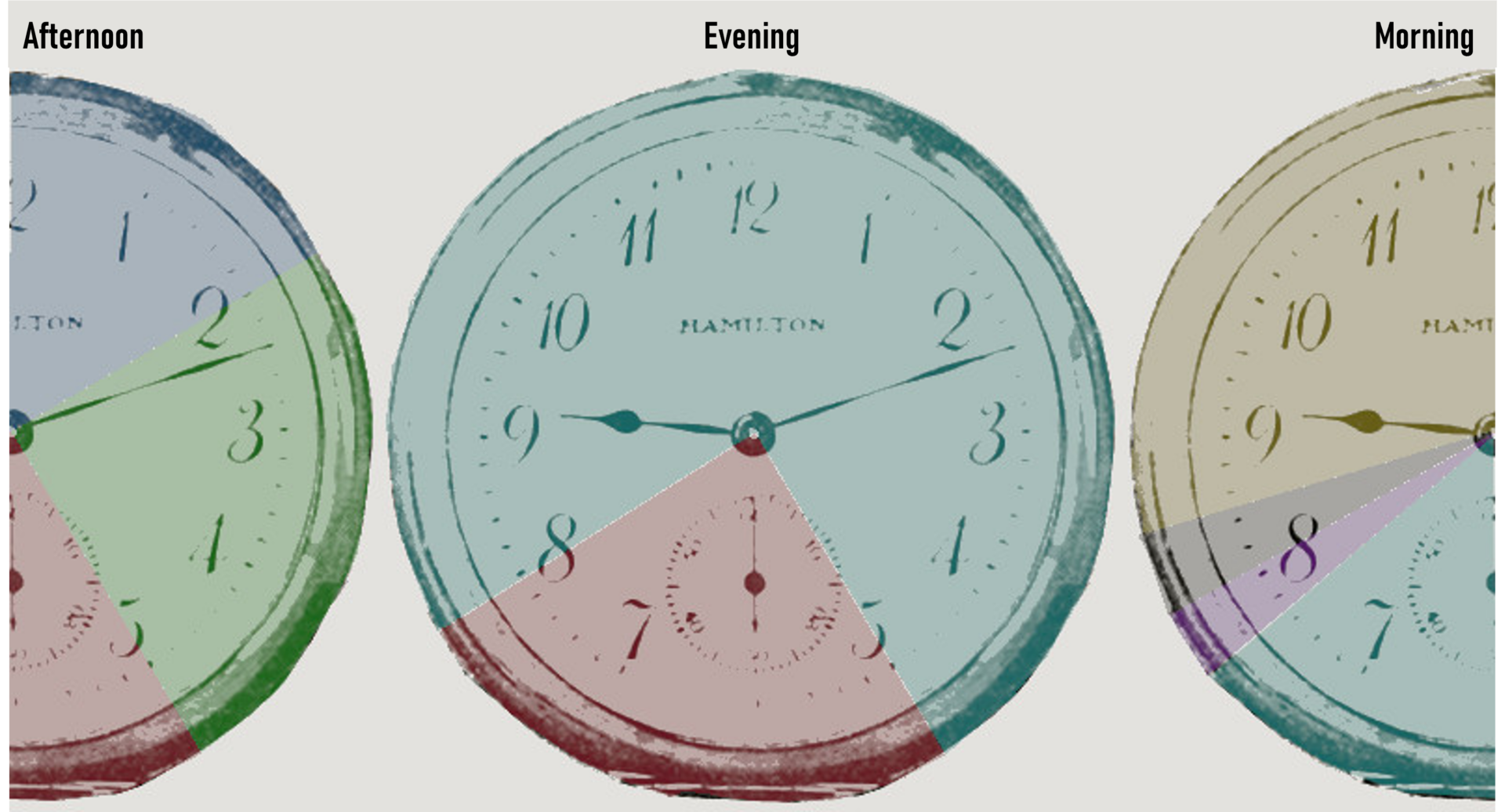
The nurse’s uniform

Canadian Nursing Sisters were easily recognizable by their blue uniform and white veil, which earned them the nickname “bluebirds.” The uniform consisted of a blue double-breasted tunic, a long blue skirt made of sturdy fabric, white cuffs and a collar. Nurses frequently wore a white apron over their uniform. Some replaced the white veil with a large hat or helmet.
As officers, nurses also had formal wear, which was a darker blue with red trim accompanied by a cape for colder weather. Formal dress was only worn on special occasions and not on duty. Like other Canadian officers, nurses received an allowance to help cover the cost of their uniforms
A vote for nurses
Women in Canada received the right to vote gradually. At first, The Military Voters Act (1917) gave the right to vote to nurses and women in the armed forces. Later that same year, The Wartime Elections Act extended the right to vote to women who had a husband or a son fighting overseas. Both of these laws were part of Prime Minister Robert Borden’s strategy to increase support for conscription. He believed that these targeted women would be more willing to support mandatory involvement in the Canadian expeditionary Force. After increased pressure from suffragettes, the Unionist government extended the right to vote to a majority of women in 1918. This however did not include Indigenous women, Asian women, and women from communities considered to be “enemy aliens.” Women in Quebec also could not vote in provincial elections until 1940.
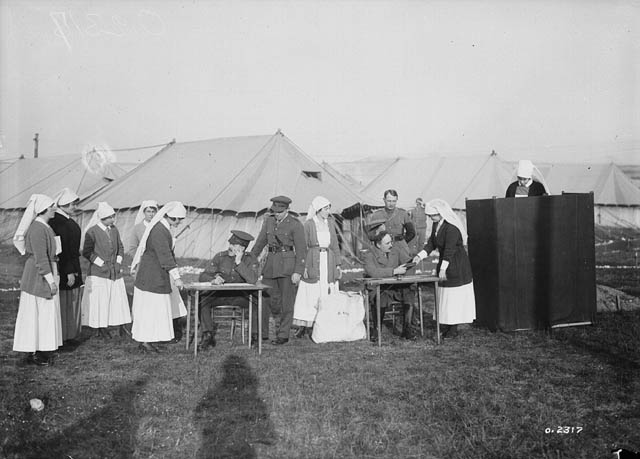

Through their eyes
Born in Ontario in 1890, at a time when Indigenous women were not allowed to take part in most Canadian nursing programs, Charlotte Edith Anderson Monture decided to pursue her education in the United States. She graduated with honors from New York’s New Rochelle Nursing School and joined the United States Army Nurse Corps when the Americans entered the conflict in 1917. She became the first female Mohawk veteran from the First World War and the first Indigenous woman to gain the right to vote in Canada.
Image: Charlotte Edith Anderson Monture (courtesy of Historica Canada/the Moses Family)
Emergency Preparedness
Canadian nurses went overseas with very little military training. In order to care for wounded soldiers, they had to adapt their medical knowledge to vastly different scenarios, while also learning how the military functioned. After the war, some of the nurses who returned home began to prepare in case another conflict occurred. This included getting better equipment and supplies, and having better education and training . Nurses were also integrated into the navy, army and air forces so that when Canada again found itself thrust into world conflict in 1939, there was no shortage of Nursing Sisters who were ready and prepared for action.
By the Numbers
A total of 3,141 Nursing Sisters served in the Royal Canadian Army Medical Corps. 2,504 of those served overseas in England, France and the Eastern Mediterranean at Gallipoli, Alexandria and Salonika. By the end of the First World War, approximately 58 Nursing Sisters had given their lives, dying from disease or enemy attacks (including the bombing of a hospital and the sinking of a hospital ship).

